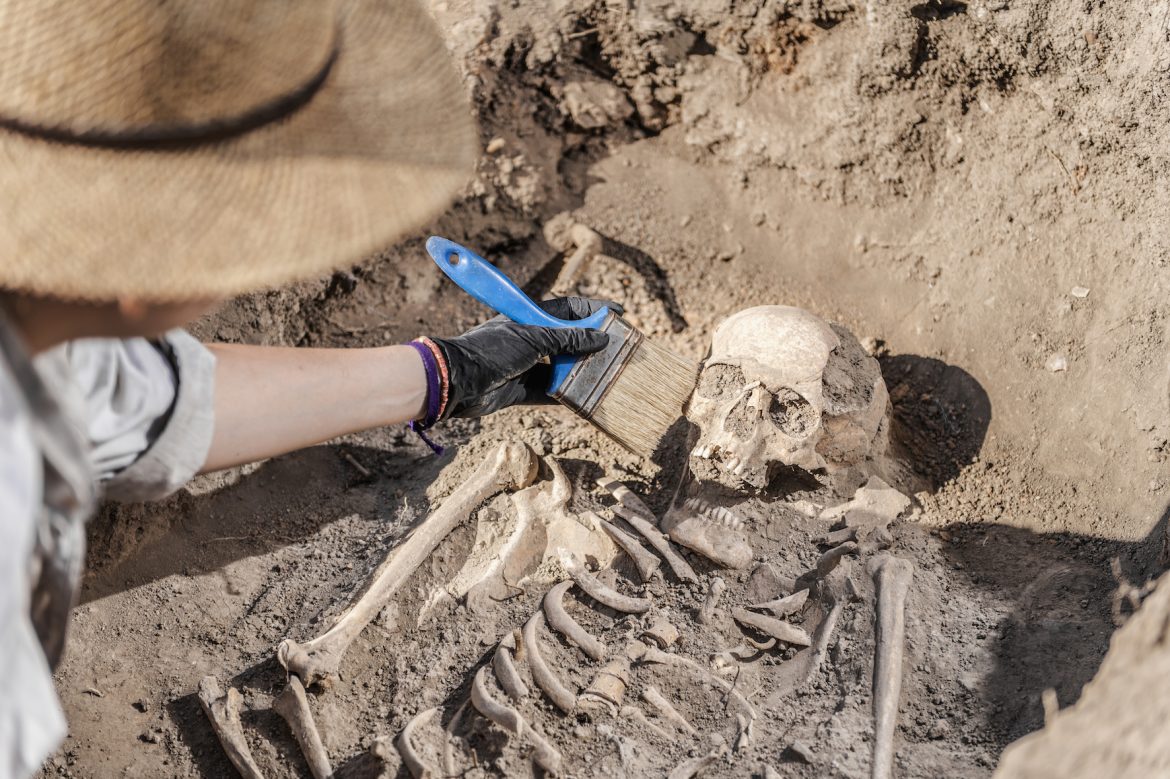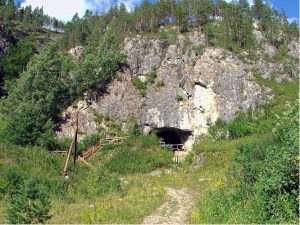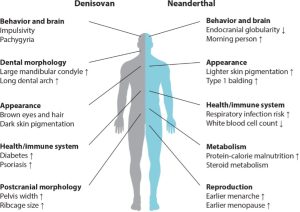
What Exactly is Human?
The origin of modern humans commences with the emergence of Homo sapiens in Africa. Approximately 300,000 years ago, our ancestors embarked upon their journey across the sun-scorched terrain of Africa, marking the outset of humanity’s dispersion across the globe. A closer examination of this odyssey seems greatly captivating!
The origin and evolution of humans rank amongst the most intriguing subjects. Diverse perspectives on the emergence and proliferation of modern humans have fascinated scholars for many years, and as it seems, will continue to do so. In the latter half of the 20th century, one of the two most widely accepted hypotheses posited that modern humans arose from a single population in Africa, subsequently migrating and replacing other human species as it dispersed. The other hypothesis suggested the ancestral populations of modern humans migrated out of Africa early in history, giving rise to distinct human subspecies in various regions, each adapting to unique environmental conditions. These discussions on the origins and history of humans predate the remarkable revelations brought by genetic science, and now we have a significantly different-than-estimated picture today!
It is already known that the ancestors of modern humans shared intimate connections with other Homo species, engaging in genetic interchange. With different species, in different locations and on multiple occasions. This genetic trade between different species is known as introgression or horizontal gene flow. The concept warrants closer examination at this point. Introgression occurs between two biological species that share a relatively “recent” common ancestry. As a relevant example, let us consider modern humans (Homo sapiens) and Neanderthal humans (Homo neanderthalensis). These two species must stay isolated from each other for a period long enough for their respective gene pools to diverge significantly. As a result of this divergence, any genetic exchange inserts discernable genes into the recipient population’s gene pool. Analysis of these genes permits estimation of the intensity, duration, and temporal scope of genetic interchange between distinct species -the longer the intervening period, the smaller the gene clusters exchanged. Some studies have even revealed instances of gene exchange occurring as recently as 20,000 years ago, exemplified by the Denisovans.

Recent studies illuminate the interactions between modern humans and other human species, prompting contemplation of the essence of humanity while digging into the intricate tapestry of these relationships.
Genetic inquiries have elucidated that much of human diversity can be traced back to a relatively homogeneous ancestral population in Africa. This population possibly underwent a severe bottleneck (a sudden and drastic reduction in numbers) between 100,000 and 200,000 years ago, resulting in a historical juncture where the forebears of all extant humans numbered a mere 10,000 individuals, or even fewer. This implies a near-extinction event in human history, which likely recurred on multiple occasions. The majority of genetic diversity observed in present-day humans accrued subsequent to this bottleneck. While there are genes acquired from other human species during the few genetic exchanges prior to the bottleneck, ,there are also those inherited from ancient populations of modern humans nearly obliterated during the bottleneck event. Consequently, tracing the origins of some seemingly “distinct” genes proves to be challenging.
As humans ventured forth from Africa and commenced their global migration, they encountered individuals who bore a resemblance to them but with slight differences -other human species. suggests archaeologist John Shea of Stony Brook University in New York says “They probably thought, ‘Oh, these guys look a little bit different. Their skin color’s a little different. Their faces look a little different. But they’re cool guys, let’s go try to talk to them.’” Of course, it is hard to imagine how this happened exactly, but the recurrent gene exchanges imply that this was not a one-time incident.
Among the most prominent contributors to human DNA are Neanderthals and Denisovans. Additionally, there exists a mysterious “ghost” human species, known to have penetrated into the genome of modern humans, although not clear when, where, and with whom. A study published in Plos Genetics in 2020 suggests the occurrence of at least two distinct gene flow events from this enigmatic ghost human populatipn. Neanderthals, Denisovans, and other unidentified species, though absent from the Earth today, are intricately interwoven into the fabric of our genetic makeup, coexisting and living within us. The examination of modern human populations today reveals that Europeans possess between 1 and 4% Neanderthal DNA, whilst Oceanian populations harbour approximately 5% Denisovan DNA. Conversely, the prevalence of these genes are notably lower in African populations, while Europeans carry Neanderthal DNA with a ratio of around 1 in 3.
The intermingling of Neanderthals and Denisovans with modern humans constitutes a pivotal factor in the evolution and genetic diversity of humans. While this intricate process helps us understand the history of different human species and the evolution of modern human genetics, it still hosts numerous question marks. Research aimed at comprehending the effects of Neanderthal and Denisovan DNA on modern humans is imperative for discerning the intricacies of ancient hybridizations and their consequences. Advancements in this domain will bring a deeper understanding of human evolution and ancestral lineages. Whilst research on human evolution and genetics illuminates the origins and historical trajectory of humanity, studies also investigate the biodiversity and adaptations of modern humans. However, we lack defnite knowledge on the roles played by Neanderthals and other ancient human species, which necessitates more research. A published study underscores that more than 99.9% of all species that have ever existed have succumbed to extinction, drawing attention to the potential prevalence of ghost taxa within the human genome and emphasising the imperative for further exploration.
The transfer of genes from Neanderthals and Denisovans into the modern human genome conceives several significant questions. The frequency and distribution of these hybridization events, as well as their consequences on modern human traits, remain unclear. Nonetheless, certain studies posit that Neanderthal and Denisovan DNA may have influenced specific characteristics of modern humans.
Studies aiming to illuminate the effects of Neanderthals and Denisovans on the genetic architecture of modern humans broadens our understanding of human origins and evolution. A glance at a selection of these studies reveals our accrued knowledge regarding the outcomes of these genetic exchanges and their potential impact on our lives. You may remember that a few months ago, we wrote about the effects of 3 different Neanderthal-derived gene variants on human pain thresholds. Another study indicates associations between Neanderthal DNA and behaviours such as smoking and alcohol consumption, as well as susceptibility to pain. Furthermore, analyses of health records uncovered possible high correlations between neurological and psychiatric disorders and Neanderthal DNA contribution. Investigations into traits among a sample of 122,000 people identified associations between Neanderthal DNA and sleep patterns. Other studies associate the effects of Neanderthal DNA on skin pigmentation, hair morphology, and immune function of modern humans. We are not quite finished yet! Recent findings, published in 2022, unveiled links between certain Neanderthal-derived genes and heightened susceptibility to liver cancer. Denisovan DNA, conversely, has been associated with skeletal and dental morphology, as well as variations in hair, eye, and skin pigmentation. Additionally, Denisovan genes have been implicated in predispositions to some diseases such as diabetes and psoriasis, as well as adaptations to high-altitude environments.

Evidently, the encounters with our ancient cousins have bequested a multitude of traits upon us. The graphic below illustrates some of the effects of Neanderthal and Denisovan genes on modern human characteristics, influencing aspects ranging from skeletal structure and dental morphology to disease susceptibility and behavioural tendencies.
Of course, this gene flow between archaic human species and modern humans has not been unidirectional, with instances of genetic exchange occurring in both directions. A study scrutinising the DNA of a Neanderthal who lived approximately 122 thousand years ago revealed a genetic overlap of about 3% with modern humans.
In summary, the integration of Neanderthals, Denisovans, and other ancient human species into the genome of today’s modern humans bears significant implications for human evolution and genetic diversity. While shedding light on the intricacies of our evolutionary heritage and ancestral connections, this integration process also serves as a critical component in elucidating the origins of genomic diversity. Continued research on this topic will deepen our understanding of human evolution and genetics, enriching our comprehension of the origins of genetic diversity. Future research will unveil further revelations in the labyrinthine journey of human evolution and genetic diversity, thanks to the relentless curiosity and tenacity of scientists. We are at the initial stages of this pursuit, and a wealth of knowledge awaits our discovery!
REFERENCES
- 1. https://pubmed.ncbi.nlm.nih.gov/31702050/
- 2. https://pubmed.ncbi.nlm.nih.gov/36503519/
- 3. https://www.ncbi.nlm.nih.gov/pmc/articles/PMC9534885/
- 4. https://pubmed.ncbi.nlm.nih.gov/27032491/
- 5. https://www.ncbi.nlm.nih.gov/pmc/articles/PMC4849557/
- 6. https://journals.plos.org/plosbiology/article?id=10.1371/journal.pbio.3001776
- 7. https://www.ncbi.nlm.nih.gov/pmc/articles/PMC9731433/
- 8. https://www.ncbi.nlm.nih.gov/pmc/articles/PMC9741939/
- 9. https://journals.plos.org/plosgenetics/article?id=10.1371/journal.pgen.1008895
- 10. https://www.nature.com/articles/s41586-018-0455-x
